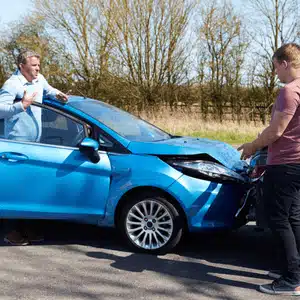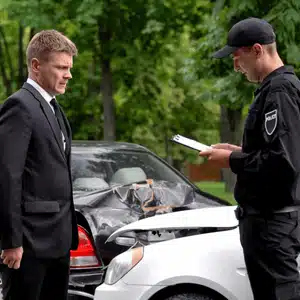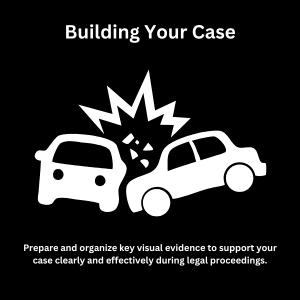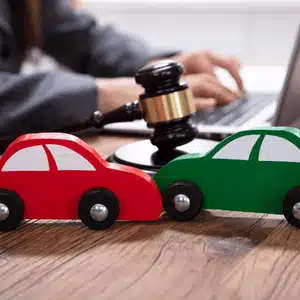When you’re in a car accident with no clear proof of fault, you face a word vs word insurance claim. This happens when each driver tells a different story about the accident. No witnesses saw what happened. The police report shows conflicting accounts. Your word stands against the other driver’s word.
These cases are tough. Insurance companies often deny claims when stories conflict. They use the dispute as reason to avoid compensation. But you can still win your case with the right approach.
Texas follows an at-fault insurance system. The at fault driver must recompensate for damages. When fault is unclear, proving responsibility becomes critical.
Texas uses modified comparative negligence rules. If you’re 50% or less at fault, you can recover damages. Your compensation gets reduced by your fault percentage. If you’re more than 50% responsible, you get nothing.
This makes evidence crucial. You need to show the other driver bears most guilt. Even small verifications can tip the scales in your favor.

Your actions right after the car accident matter most. Take a deep breath and remain calm. Check if anyone is hurt. Call 911 if injuries exist or property damage looks significant.
Move to safety if possible. Turn on hazard lights. Don’t admit fault or apologize. These statements can hurt your request later.
The accident scene holds vital clues. Preserve everything before it disappears. Quick action here can determine your claim’s success.
Evidence turns just your word into solid proof. At the accident scene, take pictures of vehicle damage, skid marks, red light violations, and location. Look for witnesses, get names and even the testimony of passengers or any person involved.
Exchange info with the other driver and note behavior. Did they admit to the mistake? Write a detailed account of how the accident happened, clearly explain any errors or unsafe actions. These following steps help support your car accident file.
Documenting every mistake made during the event matters. If a mistake at a red light or improper turn occurred, thorough notes and even the testimony of others can strengthen your statement. Be sure to file everything carefully.

Call police even for minor crashes. Officers create an official accident report. This document carries weight with insurance companies.
The responding officer investigates the scene. They talk to both drivers and any witnesses. They examine vehicle damage and road conditions. The police report often includes a preliminary conclusion about fault.
This isn’t legally binding, but insurance adjusters rely heavily on police findings. A report that blames the other driver strengthens your position significantly.
Get a copy of the report once it’s ready. Review it carefully for errors. If something is wrong, contact the officer.
Report your car accident to your insurer fast, this additional step is required. If the other driver’s company calls, speak to a lawyer first. In this type of conflict, just your word isn’t enough. Even one mistake in your statement can hurt your case.
Gather evidence to verify your account and avoid any mistake in documentation. If a low offer comes, don’t settle. One mistake many people make is accepting too little too soon. You may deserve more compensation for property damage, injuries, and the accident aftermath.

Physical evidence tells the real story. Vehicle damage reveals impact angles and crash severity. Skid marks show braking patterns and speeds. These clues don’t lie like people might.
Modern cars have data recorders that capture crash information. This “black box” data shows your speed, braking, and steering just before impact. It can show you tried to avoid the collision.
Security cameras near the accident aftermath might have recorded everything. Check nearby businesses for surveillance footage. Traffic cameras might have captured the crash too. This video evidence can instantly resolve fault disputes.
Medical records also support your case. Injury patterns often match specific crash types. A doctor’s report linking your injuries to the accident helps prove what occurred.
Sometimes the other driver’s insurance refuses to accept responsibility. They affirm their investigation shows no fault or split fault. Don’t give up.
You can file a complaint with the Texas Department of Insurance. They ensure companies follow proper claim procedures. However, they can’t force payment in genuine fault files.
Your own insurance might help. Collision coverage covers for other vehicle repairs regardless of fault. You’ll disburse your deductible, but you can get your car fixed.
Uninsured motorist coverage applies when the other driver won’t recompense. This treats them like they have no insurance. Your company recompenses your claim and pursues the other driver.

An attorney can level the playing field against insurance companies. Attorneys know how to investigate crashes and gather authentication. They understand insurance tactics and deadlines.
Many car accident lawyers work on contingency fees. You lose nothing unless they win your case. This makes legal help available even when money is tight.
Lawyers can file lawsuits to force resolution. The court process includes discovery, where both sides must share evidence. Depositions put people under oath. This often reveals the truth.
Texas gives you two years to file a lawsuit for car accident injuries. Property damage requests also have deadlines. Don’t wait too long to take action.
Insurance companies know these time limits. They may delay hoping you’ll miss the deadline. Mark your calendar and take steps to protect your rights.
Car accident claims are challenging but not impossible. Success comes from quick action, solid pictures, and persistence.
Document everything at the scene. Get the police report. Gather witness statements. Take photos of the damage and the crash. These steps turn your word into the truth.
Stay calm when dealing with insurance adjusters. Stick to facts and avoid speculation. Don’t accept unfair settlement offers without considering all options.
Remember that even when stories conflict, evidence reveals truth. Skid marks, vehicle damage, and witness accounts can demonstrate fault. Technology like dash cameras and data recorders provide objective verification.
If the other driver’s insurance won’t recompense, explore your own coverage options. Consider hiring an attorney to negotiate on your behalf.
Most importantly, don’t let conflicting stories discourage you. With the right approach, you can prove what really happened.
Texas law protects accident victims who aren’t at fault. Use every available tool to demonstrate the other driver’s responsibility. Your persistence and evidence gathering can overcome the initial word vs word conflict and lead to a successful request resolution.